The Comprehensive Guide to Selecting a Medical Alert System
Explore essential insights for choosing the perfect medical alert system with our guide. Understand features like fall detection, GPS tracking, and costs, and learn how to select a reliable system for safety and peace of mind. Ideal for seniors and their families seeking security.

Medical alert systems have emerged as indispensable tools for individuals who may face medical emergencies, especially when living alone. These systems, also known as personal emergency response systems (PERS), serve as a lifeline to emergency services, providing immediate assistance when needed. They are particularly beneficial for the elderly, people with medical conditions, or those recovering from surgery, ensuring that help is just a button press away.
The Role of Medical Alert Systems in Emergency Response
A medical alert system typically consists of a wearable device, like a pendant or bracelet, equipped with a button to summon help. Upon activation, the device connects the user to a monitoring center, staffed by trained professionals ready to dispatch emergency services or contact designated family members. This immediate response can be crucial in preventing severe complications from falls, heart attacks, strokes, or other medical emergencies.
Variety and Customization for Individual Needs
The medical alert industry has evolved to offer a wide range of systems, catering to diverse needs and lifestyles. From basic in-home systems that work with landlines to sophisticated mobile devices and medical alert devices with GPS tracking and fall detection sensors, there is a solution for every scenario. Some devices even integrate health monitoring features like heart rate sensors, providing an added layer of security.
Understanding the Costs and Value
When selecting a medical alert system, it's important to consider both the initial investment and ongoing costs. These costs can include equipment charges, monthly fees for monitoring services, and additional expenses for features like automatic fall detection. While the investment in a medical alert system may seem significant, the value it provides in terms of safety and peace of mind is immeasurable, especially for those living alone or at risk of medical emergencies.
A Step Towards Safer, More Independent Living
Understanding the workings, varieties, and costs of medical alert systems is crucial in choosing the right system for individual needs. These systems not only offer a direct line to emergency assistance but also grant users and their families significant peace of mind. With the right medical alert system, individuals can enjoy a safer, more independent lifestyle, knowing that help is always within reach.
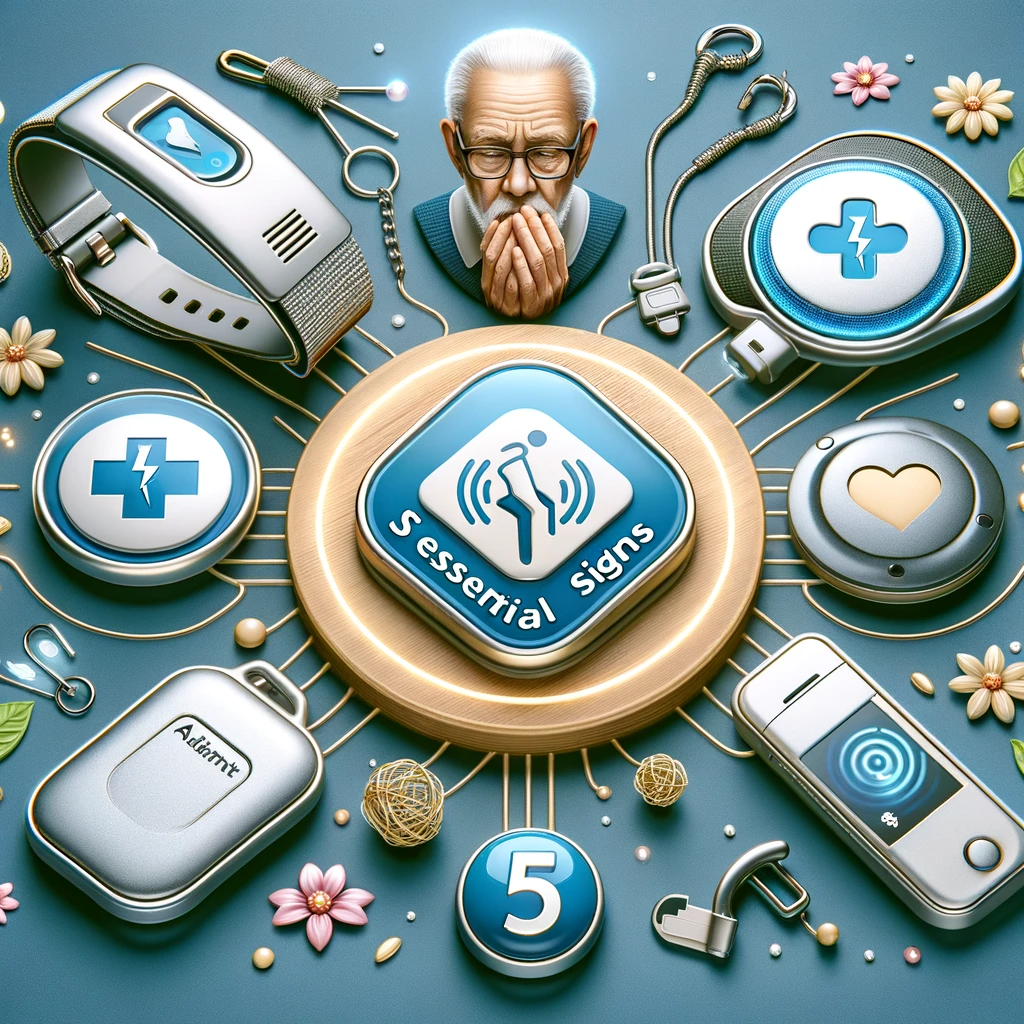
5 Essential Signs Indicating the Need for a Medical Alert System
Medical alert systems provide swift access to help during emergencies. By simply pressing a button, users connect to operators like “Jane from Life Alert” who can quickly dispatch assistance. These systems, ranging from basic pendants to advanced watches with automatic fall detection and dialing, are crucial for safety and peace of mind.
Medical alert systems provide swift access to help during emergencies. By simply pressing a button, users connect to operators like “Jane from Life Alert” who can quickly dispatch assistance. These systems, ranging from basic pendants to advanced watches with automatic fall detection and dialing, are crucial for safety and peace of mind.
If your loved one exhibits any of these signs, consider investing in a medical alert device:
History of Falls Falling once can double the risk of subsequent falls. A study in the American Journal of Epidemiology underscores the importance of medical alerts post-fall, especially if getting up independently is challenging. Prolonged time on the floor post-fall can lead to severe consequences, making immediate assistance essential.
Living Alone or Spending Significant Time Alone Seniors living alone might not always reach the phone in an emergency. A simple button press on a medical alert device can summon help for medical or non-medical emergencies, including dispatching firefighters or police.
Increased Reluctance to Leave Home A change in behavior, like avoiding going out, might indicate a feeling of vulnerability. Mobile medical alert systems with GPS tracking, like Medical Guardian’s Mini Guardian, can empower them to resume normal activities with the assurance of help being easily accessible.
Specific Medical Diagnoses or Risk Factors Conditions such as diabetes, heart disease, dementia, Parkinson’s disease, and others might necessitate immediate medical attention. Medical alert devices ensure quick help during emergencies like heart attacks or low blood sugar episodes. Assessing fall risks and other medical emergency factors with a gerontologist is vital.
Doctor’s Recommendation When a medical professional recommends a medical alert system, it’s based on evaluated risk factors. Interestingly, people are more likely to heed a doctor's advice over a family member's suggestion regarding medical alerts.
However, it's crucial to recognize that not everyone may willingly use these devices, despite their availability and proven benefits. Encouraging a loved one to adopt a medical alert system can be challenging but is crucial for their independence and safety.
Medical alert systems, especially those with fall detection, location tracking, and GPS capabilities, are not just emergency tools but enablers of an independent lifestyle. They can be the deciding factor between aging in place or moving to an assisted living facility. Understanding and communicating their benefits is key to addressing any concerns your loved one might have.
These systems, provided by companies like Bay Alarm Medical, Medical Guardian, and MobileHelp, offer a range of options including home-based and mobile systems. When evaluating these systems, consider features like fall detection sensors, automatic fall detection, cost, and the reliability of the system. Wearable devices connected to cellular networks ensure coverage even on the go, while discreet designs maintain user dignity.
Choosing the right medical alert system involves considering costs, evaluating system features, and understanding the needs of your loved one. With various top medical alert systems brands offering different options, from traditional home systems to mobile devices with advanced monitoring capabilities, the right system can provide unparalleled peace of mind and security.
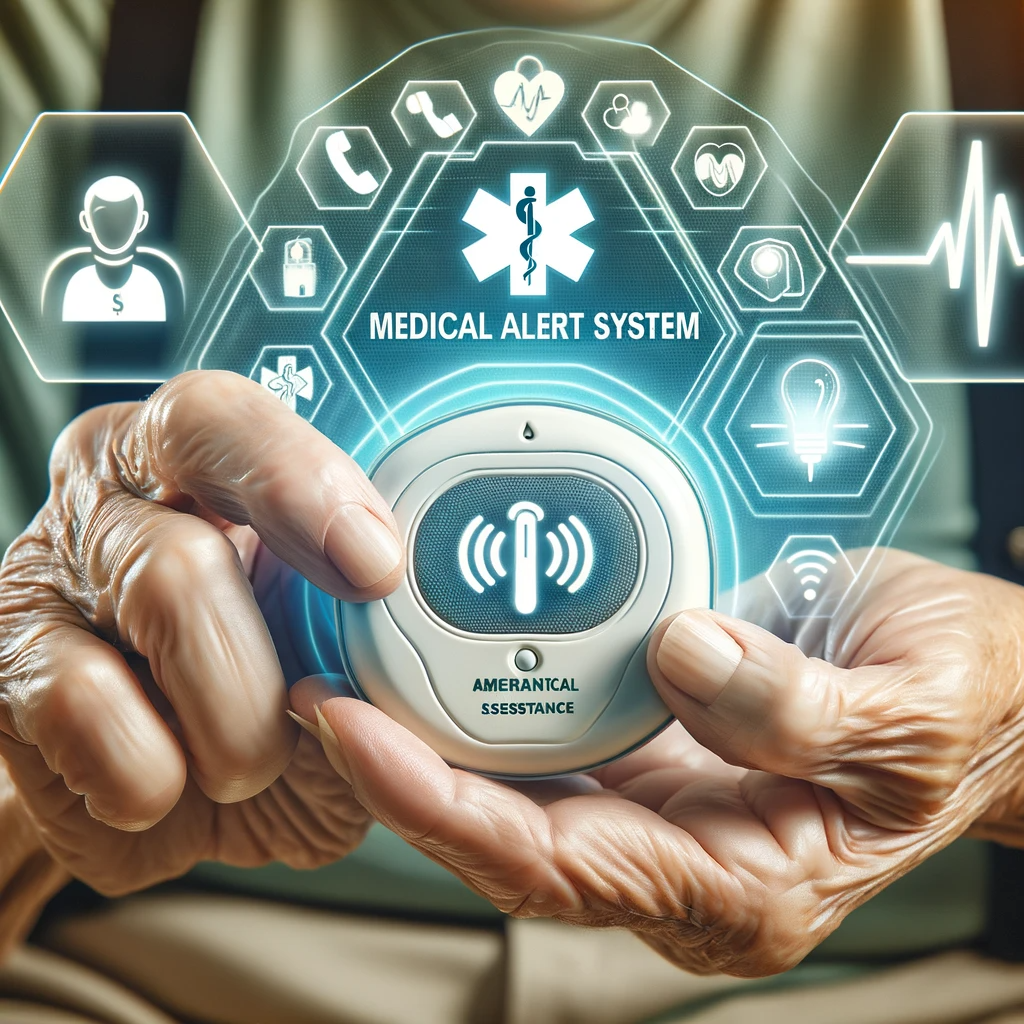
Understanding How Medical Alert Systems Work
The Mechanism of Personal Emergency Response Systems (PERS)
Medical alert systems, fundamentally functioning as personal emergency response systems, are designed to provide immediate assistance in the event of a medical emergency. These systems are particularly vital for elderly individuals, those with chronic health conditions, or anyone who might require urgent medical attention. At the core of these systems is a simple yet effective mechanism: a user presses a button to signal an emergency, thereby activating the system.
Wearable Devices: The Frontline of Emergency Alerts
The primary component of most medical alert systems is a wearable device, often in the form of a pendant, bracelet, or even a smartwatch-like gadget. These wearables are engineered for ease of use, with a prominently placed button that users can press in an emergency. The design of these devices is typically user-friendly, considering the needs of seniors or individuals with limited dexterity.
Connectivity: Linking Users to Help
Once the emergency button on a wearable device is pressed, the system transmits an alert through various connectivity options. Depending on the user's setup and preferences, this can be via a landline, cellular network, or GPS technology. Landline-based systems are connected to a user's phone line, while mobile medical alert systems use cellular networks to communicate with a monitoring center. GPS-enabled devices offer the added advantage of location tracking, crucial for emergencies that occur outside the home.
The Role of Monitoring Centers in Emergency Response
The alert from the medical alert device is received by a monitoring center, a dedicated facility where trained responders are available around the clock. These responders act swiftly upon receiving an from getsafe medical alert system: they can assess the situation, communicate with the user through the device's built-in speaker, and dispatch emergency services if required. Additionally, they can contact family members, caregivers, or neighbors based on the user's pre-established emergency contact list.
Dispatching Emergency Services and Notifying Contacts
In situations where immediate medical intervention is necessary, the monitoring center will contact and coordinate with emergency services like ambulances, fire departments, or the police, providing them with the user's location and relevant details. Simultaneously, the system can notify family members or designated contacts, keeping them informed and involved in the emergency response.
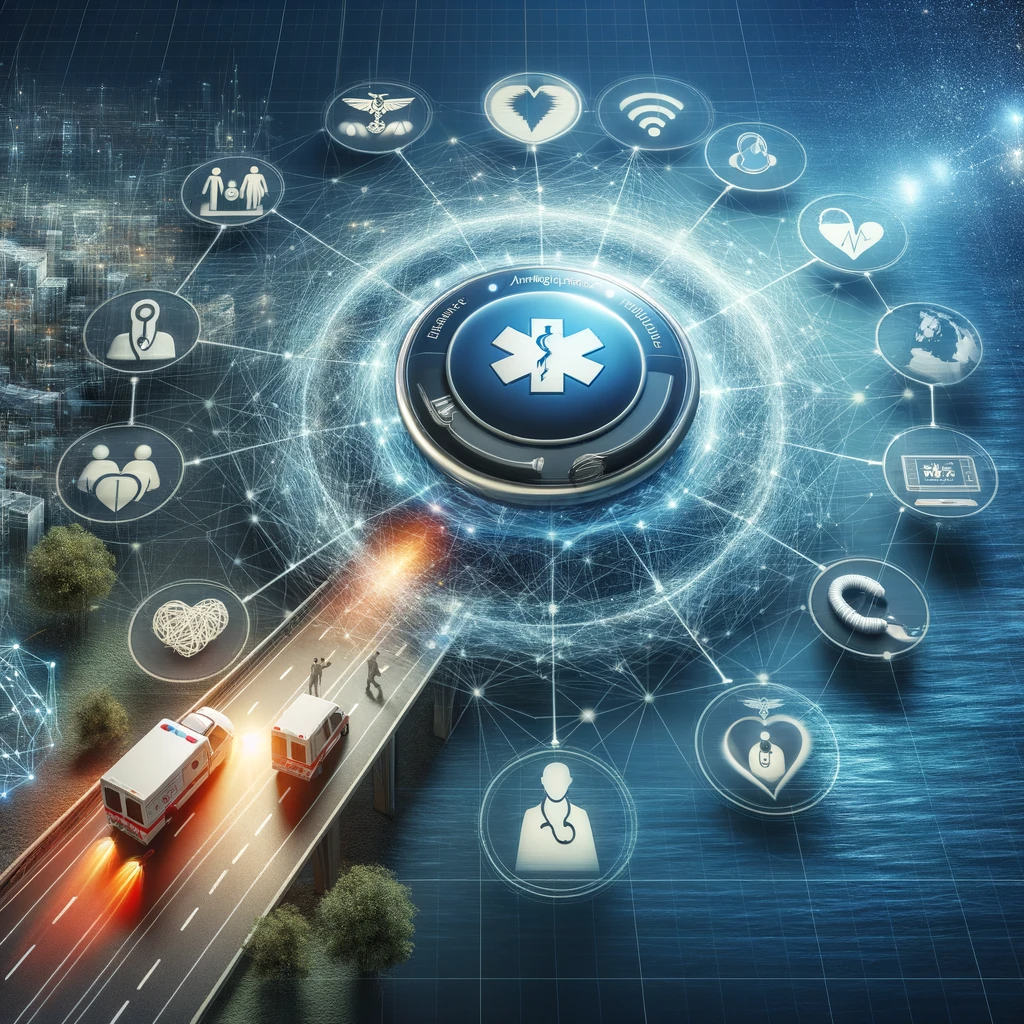
A Comprehensive Approach to Emergency Assistance
In essence, medical alert systems embody a comprehensive approach to providing emergency assistance. They bridge the critical gap between the user in distress and the necessary help, ensuring that medical emergencies are addressed promptly and effectively. By understanding how these systems function, users and their families can appreciate the lifeline medical alert systems and the layers of safety and reassurance they offer, making them an indispensable part of personal healthcare management.
Key Features to Consider in Medical Alert Systems
Fall Detection Sensors: A Crucial Safety Net
One of the most vital features in many medical alert systems is the inclusion of automatic fall detection technology. This feature is especially crucial for individuals with a higher risk of falls, such as the elderly or those with mobility issues. Fall detection sensors work by recognizing sudden movements or angles that are characteristic of a fall. In such events, the system automatically sends an alert to the monitoring center, even if the user is unable to press the emergency button. This proactive approach ensures timely assistance and can be a lifesaver in critical situations.
GPS Tracking: Essential for On-the-Go Safety
GPS tracking is a key feature in mobile medical alert systems, providing an essential safety net for users who are active and often away from home. This technology enables the monitoring center to pinpoint the user's location in real-time, which is invaluable during emergencies that occur outside the home. Whether the user is on a walk, shopping, or traveling, GPS tracking ensures that they can be located quickly by emergency responders, thereby enhancing the effectiveness of the medical alert system. Check out these wearable soles for GPS tracking
Range and Battery Life: Maximizing Effectiveness and Reliability
The range of the wearable device from its base station is a critical consideration, particularly for home-based medical alert systems. A longer range ensures that the user is covered throughout their home and even in the yard or garden. For mobile medical alert devices, battery life is a significant factor. Longer battery life means less frequent charging and more consistent coverage, reducing the risk of the device running out of power when it is needed most.
Water-Resistance: Ensuring Functionality in High-Risk Areas
Considering that many falls occur in the bathroom, it is essential to select a water-resistant medical alert device. Water-resistant features ensure that the device can be worn at all times, including during showers or baths, providing continuous protection. This feature not only offers peace of mind but also ensures that the user is safeguarded in one of the most vulnerable areas of the home.
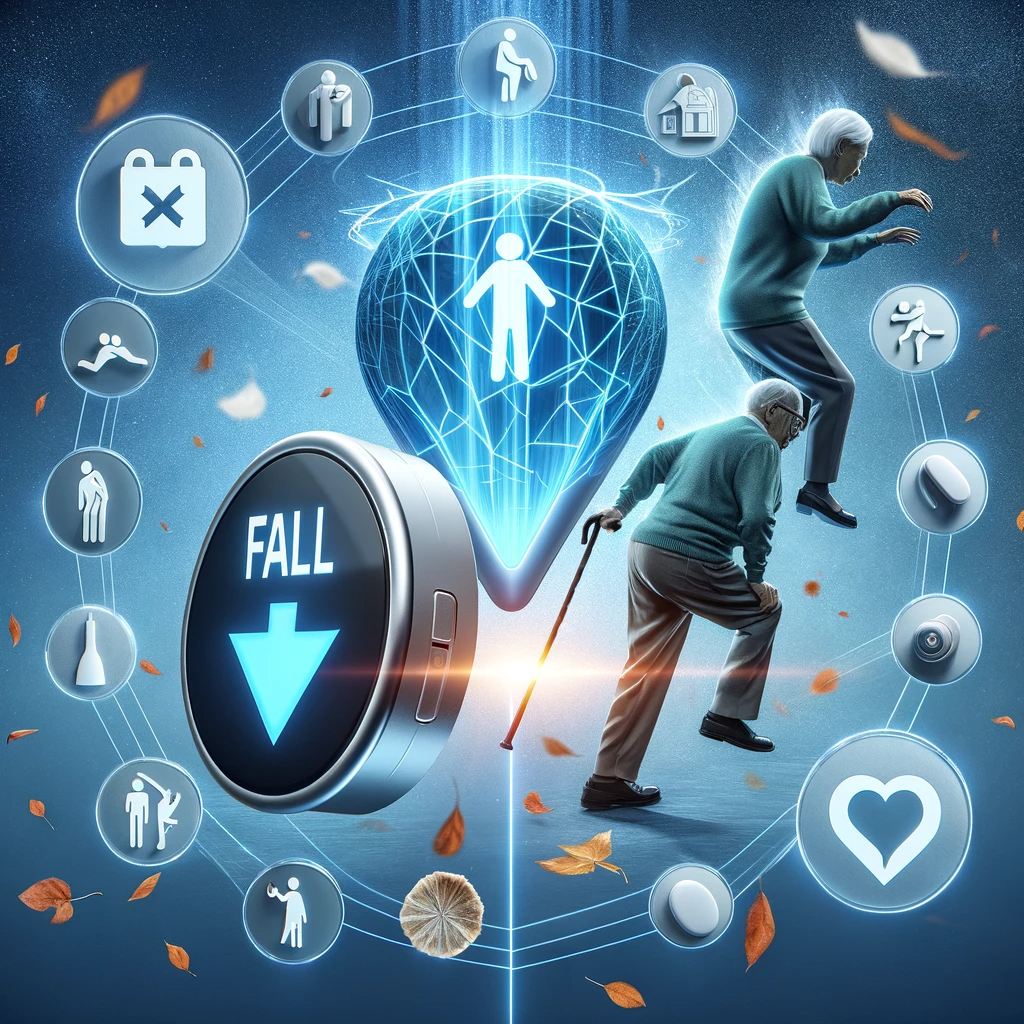
Additional Features: Enhancing User Experience and Safety
Modern medical alert systems often come with additional features that enhance user safety and convenience. These can include medication reminders, which help users maintain their medication schedule, and activity monitoring, which keeps track of the user's daily activity levels. Voice-activated emergency calls are another beneficial feature of mobilehelp medical alert systems, allowing users to summon help even if they are unable to physically press the button.
Cost Considerations in Choosing a Medical Alert System
Evaluating the Price Spectrum
Medical alert systems vary in price, often influenced by the range of features and the type of technology they employ. Costs typically include initial equipment fees for the device and monthly charges for the monitoring service. Some systems may also have additional charges for features like fall detection and GPS tracking.
Balancing Cost with Necessity
When selecting a medical alert system, it's important to balance the cost against the specific needs and lifestyle of the user. While more advanced systems with additional features might be pricier, they can offer greater peace of mind and safety. It's also worthwhile to consider any discounts available for annual payments or for purchasing multiple devices.
A Thoughtful Investment
Choosing the right medical alert system involves careful consideration of key features like fall detection, GPS tracking, range, battery life, water resistance, and additional functionalities. Alongside these features, cost considerations play a significant role in decision-making. By evaluating these aspects, users and their families can make an informed choice, ensuring that the selected medical alert system provides the necessary safety net tailored to the user's lifestyle and needs.
Evaluating Medical Alert System Providers
Choosing the right provider for a medical alert system is as crucial as selecting the system itself. This decision can significantly impact the effectiveness and reliability of the medical alert service being received in emergency situations. When evaluating different providers, several key factors should be considered:
Customer Service: The Cornerstone of Provider Quality
Customer service is a critical aspect of any medical alert system provider. High-quality customer service ensures that users can get assistance with their system whenever needed, from initial setup to troubleshooting. Providers should offer multiple channels of communication, such as phone support, email, and live chat. Responsive and compassionate customer service is particularly important for medical alert companies, since users often include elderly or vulnerable individuals who may need extra guidance and reassurance.
Monitoring Center Reliability: Ensuring Prompt Response
The reliability of the monitoring center is a vital consideration. A dependable monitoring center should operate 24/7, offering uninterrupted service. The staff should be well-trained and capable of handling a wide range of emergencies, ensuring that users get the appropriate response quickly and efficiently. The center’s response time is a key metric – the faster the response, the better the service. Additionally, it’s beneficial if the center has certifications or accreditations from recognized bodies, indicating adherence to high standards.
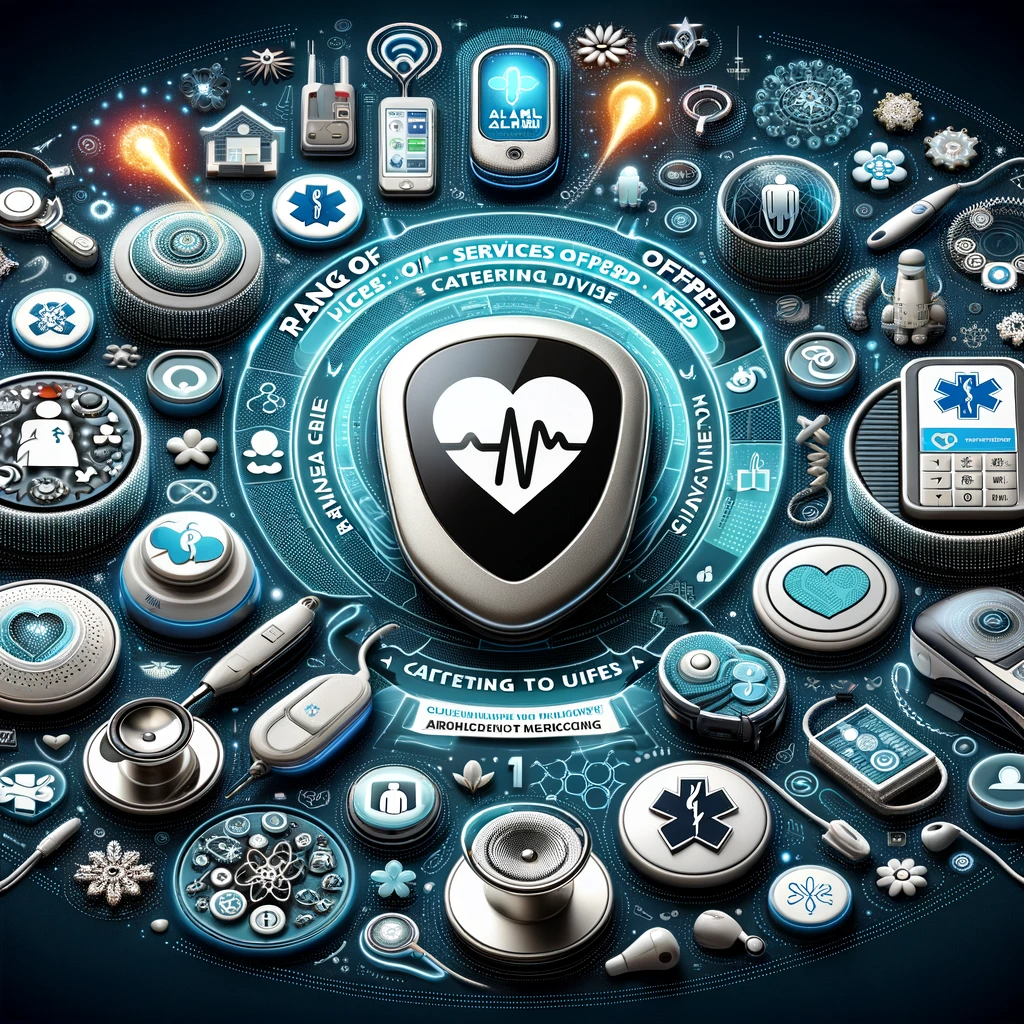
Range of Services Offered: Catering to Diverse Needs
The range of services offered by a provider can greatly influence the choice of a medical alert system. Providers like Bay Alarm Medical, LifeFone, and Medical Guardian offer a variety of options catering to different needs. Some of these services might include:
- In-home Systems: Ideal for individuals who spend most of their time at home. These systems typically work with landlines or cellular networks.
- Mobile Systems: Suitable for active users, these systems use GPS tracking to provide security anywhere the user goes.
- Fall Detection: An essential feature for those at high risk of falls, automatically alerting the monitoring center in case of a fall.
- Additional Features: Look for providers that offer extra features like medication reminders, activity monitoring, and compatibility with smart home devices.
Company Reputation and User Reviews
Researching the company’s reputation and reading user reviews can provide insights into the real-world performance of their systems. Reviews and testimonials can reveal information about the user experience, reliability, and any potential issues with the customer service representative.
Cost and Value for Money
Finally, cost is an important factor. Compare the pricing of different providers, keeping in mind the initial setup costs, monthly fees, and any additional charges for extra features. Some providers may offer packages or deals that provide better value for money, especially for long-term commitments.
Making an Informed Decision
In summary, evaluating medical alert system providers involves a thorough assessment of customer service, the reliability and certifications of the monitoring center, the range of services offered, company reputation, and cost-effectiveness. Companies like Bay Alarm Medical, LifeFone, and Medical Guardian are known for their quality services in the reliable medical alert system industry, but it's important to choose a provider that best fits the individual needs and preferences of the user. An informed decision in this regard not only ensures peace of mind but also guarantees that prompt and reliable help is available in emergency situations.
Making the Right Choice for Your Needs: Selecting the Ideal Medical Alert System
Assessing the User's Lifestyle and Activity Level
The first step in choosing the most suitable medical alert system is a thorough assessment of the user's lifestyle and activity level. This evaluation is crucial as it directly influences the type of medical alert system costs that would best cater to their needs. For instance, elderly individuals or those with mobility issues might have different requirements compared to more active adults.
For Less Active Individuals: The Value of Home Systems
For users who are less active and spend the majority of their time at home, a basic home medical alert system is often sufficient. These systems usually operate through a landline or a home-based cellular connection. They typically include a base station and a wearable device, such as a pendant or wristband, equipped with an emergency button. The range of these devices is designed to cover the entire house, including key areas like the bathroom, where falls are more likely to occur. For users with a limited range of movement, these use medical alert systems provide a reliable safety net.
For Active Users: The Benefits of Mobile Systems
On the other hand, active users who frequently leave their homes for walks, social visits, or errands would benefit more from a mobile medical alert system. These systems offer features like GPS tracking, which is indispensable for locating the user in case of an emergency that occurs outside the home. Mobile systems often come as compact, wearable devices that maintain a connection to a monitoring center via a cellular network. This ensures continuous protection no matter where on the go system user is.
Considering Fall Detection for Added Safety
Regardless of the user’s activity level, fall detection devices can be a critical feature to consider. Many medical alert systems offer automatic fall detection sensors as an added feature, providing an extra layer of security. This technology is particularly beneficial for those at a higher risk of falling, ensuring that help is summoned even if the user is unable to press the emergency button.
Evaluating Health Concerns and Specific Needs
Another key aspect in making the right choice is evaluating any specific health concerns the user may have. For instance, individuals with conditions like epilepsy or heart disease might require a system with more advanced health monitoring capabilities, such as heart rate sensors or activity tracking.
Personalized Protection for Every Lifestyle
Selecting the best medical alert system involves carefully considering the user’s lifestyle, activity level, and specific health needs. For less active individuals, a basic home system might suffice, offering essential protection within the home. Conversely, for those who are more active, a mobile system with GPS tracking and fall detection would provide broader coverage. By tailoring the choice of a medical alert system to the user's unique requirements, one can ensure optimal safety and peace of mind.
Best Medical Alert Systems
Top Medical Alert Systems
Medical Guardian:
Known for its comprehensive range and quick response time (1-25 seconds). The monthly cost starts at $29.95, and it offers both at-home (1,300–1,400 feet range) and on-the-go systems. a Fall detection device is available for an additional $10 per month. It's praised for its long range and variety of devices but has a one-time equipment fee and extra charges for certain features.
Bay Alarm Medical:
This system is valued for its affordability and quality, starting at $27.95 per month. It offers a range of 1,000 feet for at-home systems, and an optional fall detection part is available at $10 per month. It's noted for its 30-day trial period, free warranty, and various device options, including a smartwatch. However, there are additional fees for equipment and at-home fall detection.
MobileHelp:
Offers a more budget-friendly option with a monthly cost starting at $19.95. Its range varies from 600 to 1,400 feet, and it uses a landline or AT&T cellular connection. Battery life lasts up to 3 days, and fall detection is available at $11 per month. It's known for its affordability but has a longer response time (25-50 seconds) compared to others.
GetSafe:
Known for its voice-activated system, it's ideal for those who prefer non-wearable alerts. The system allows users to call for help without needing to wear a device. However, it may not be suitable for highly mobile users. Details on cost and battery life vary; visit their website for more information.
QMedic:
Appreciated for its simplicity and user-friendly design, QMedic offers straightforward functionality. It's a good fit for those who want an easy-to-use system without complex features. Pricing and battery life details can be found on their website.
Alert1:
Offers a variety of options, focusing on user-friendliness. It provides flexibility in choosing a system that best suits individual needs. For detailed information on cost, battery life, and available accessories, check their website.
Lively:
Popular for smartphone integration, appealing to a modern, tech-savvy user base. It's suitable for those comfortable with technology and looking for mobile integration. Visit Lively's website for specifics on pricing and features.
MobileHelp:
Offers budget-friendly solutions starting at $19.95/month. Pros include affordability and a decent range of services. However, the lower price might mean fewer features compared to premium options. Battery life and customer service details can be found on their website.
LifeFone:
Known for its flexibility in solutions, catering to diverse needs. Pricing varies based on the selected plan. LifeFone's strength lies in its customizable plans, but specific details on battery life and range should be checked on their website.
Philips Lifeline:
Renowned for its reliable technology, often reflected in higher pricing. It's well-regarded for quality and dependability, suitable for those prioritizing technological reliability. More information on battery life, range of services, and cost can be accessed on their website.
FAQ on Mobile Medical Alert Systems
What are Mobile Medical Alert Systems?
Mobile medical alert systems are emergency response devices designed for on-the-go use, featuring GPS tracking, cellular connectivity, and often fall detection.
How Do Medical Alert System Companies Like Bay Alarm Medical and Medical Guardian Operate?
These companies offer various medical alert devices, including mobile systems and home-based solutions, with 24/7 monitoring and emergency services dispatch.
What is the Cost of Medical Alert Systems?
The cost varies based on features and services, with monthly fees and potential equipment charges.
Are Home Medical Alert Systems Different from Mobile Systems?
Yes, home systems are typically stationary, while mobile systems offer on-the-go protection with location tracking.
What Features Should I Look for in the Best Medical Alert System?
Key features include reliability, range, battery life, fall detection, and ease of use.
How Important is GPS Tracking in Mobile Medical Alert Systems?
GPS tracking is crucial for accurate location identification in emergencies, especially outside the home.
What are the Benefits of Automatic Fall Detection in Medical Alert Devices?
It automatically alerts the monitoring center if a fall is detected, ensuring quick response even if the user can’t press the button.
Do Medical Alert Systems Work on Cellular Networks?
Yes, many modern systems use cellular networks for wider coverage.
What Should I Consider When Evaluating Medical Alert Systems?
Consider factors like cost, range, features, battery life, and the reputation of the medical alert company.
Is There a Monthly Fee for Medical Alert Services?
Yes, most systems require a monthly fee for ongoing monitoring services.
What are Wearable Medical Alert Devices?
Wearable devices, part of many medical alert systems, can be worn as pendants or bracelets and typically have an emergency call button.
How Reliable are Medical Alert Monitoring Centers?
Monitoring centers are generally reliable, offering 24/7 support and dispatching emergency services as needed.
Can Medical Alert Systems Automatically Dispatch Emergency Services?
Yes, many systems can automatically contact emergency services in case of a detected fall or other emergencies.
What are the Benefits of Having a Medical Alert Provider?
A provider ensures ongoing service, maintenance, and support for your medical alert system.
Are There Any False Alarms with Medical Alert Systems?
While rare, false alarms can occur, usually due to accidental button presses or equipment issues.
How Do Family Members Benefit from Medical Alert Systems?
They provide peace of mind knowing that their loved ones have immediate access to help if needed.
What Should I Know About the Monthly Fee for Medical Alert Services?
Monthly fees vary by provider and typically cover system monitoring and emergency dispatch services.
How Reliable are Medical Alert Systems with Location Tracking?
Systems with location tracking are generally reliable, especially important for mobile device users who may need assistance outside their home.
What are the Typical Costs of Medical Alert Systems?
Costs vary by provider, but generally include a monthly service fee and sometimes an initial equipment cost.
Do Insurance Plans Cover Medical Alert Systems?
Coverage varies; some insurance plans may partially cover the costs, but many do not.
What is a Discreet Medical Alert Device?
These devices are designed to be less noticeable, blending in with regular wearables while providing emergency assistance functionality.
Can Medical Alert Systems Detect Other Types of Medical Emergencies?
While primarily designed for fall detection, some systems have features that monitor for other emergencies, like heart rate irregularities.
What Makes Wearable Fall Detection Systems Unique?
They automatically detect falls and alert the monitoring center, even if the wearer is unable to press the button.
Are Medical Alert Systems Worth the Investment?
For many, especially those with health risks or living alone, these systems are a valuable investment for safety and peace of mind.
How Do 'On the Go' Medical Alert Systems Work?
These systems are designed for active users, offering mobile assistance and location tracking.
What is the difference between Medical Alert and Personal Emergency Response Systems?
Medical alert and Personal Emergency Response Systems (PERS) offer vital assistance during medical emergencies. When a user activates the emergency button on these devices, a monitoring center is immediately alerted. The operator can then communicate with the user through the device, assess the situation, and take appropriate action, whether it's contacting a family member or dispatching emergency services. Monitored medical alert systems typically require a monthly subscription, which may include added services like medication reminders and daily check-ins. In contrast, unmonitored systems directly dial pre-set contacts without a monthly fee, but they lack professional monitoring support. Choosing between monitored and unmonitored systems depends on individual needs. Monitored systems ensure professional assistance and faster emergency response, while unmonitored systems rely on personal contacts who may not always be available. Medical alert systems extend beyond emergency response, with options like mobile systems featuring GPS tracking, fall detection, and integration with smart devices for enhanced user convenience. These systems are designed to offer peace of mind, especially for those with medical conditions or living alone.
You might also like this article:


